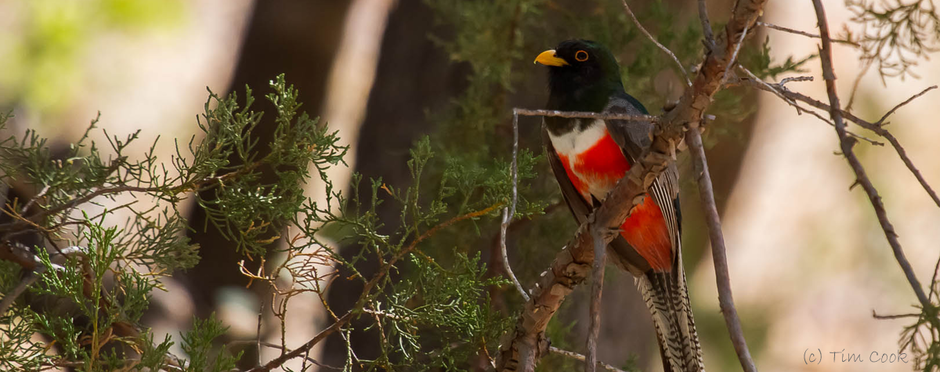
Environment and Biodiversity
Place
Madrean Archipelago, Southwest United States/Northwest Mexico, United States
Sponsor
Thierry Vandevelde
Grant
450,000 dollars spread over three years to the Board of Administration at 2008/11/28
Project leader
Sky Island Alliance (SIA)
Located at the border between Arizona, New Mexico and Mexico, the Madrean Archipelago is what is referred to as a "hotspot". In other words, one of the 34 zones identified today throughout the planet as a priority recipient of projects to conserve their ecosystems*. This territory (a terrestrial archipelago), is spread over nearly 7.8 million hectares.
Its mountain islands surrounded by vast desert prairies lie at the crossroads of several geographic systems: two climatic zones - temperate and subtropical - two mountain ranges - the Rocky Mountains and the western Sierra Madre - and two deserts - Sonora and Chihuahua. This very special location has caused the emergence of an absolutely remarkable geological and biological diversity. Yet the natural wealth nesting in its rivers, its valleys and its low mountains, has largely been destroyed by human activities.
Many partnerships at the archipelago's bedside
Governmental agencies (North American and Mexican), NGOs, universities, foundations (including the Veolia foundation), corporations and territorial authorities, have therefore joined hands to put a stop to the destruction of an ecosystem that is both exceptional and drastically weakened. They rely on the expertise of a grassroots organization dedicated to the protection and restoration of the Madrean Archipelago, Sky Island Alliance (SIA). SIA lead the Maba project (Madrean Archipelago Biodiversity Assessment).
This project has the general objective of investigating and participating in the conservation of this biodiversity. It is developing several types of action for the purpose, with significant results. The accurate study of the biodiversity, by the compilation of an inventory and documentary searches, has helped add as many as 105,000 animals, insects and plants to the existing regional database - accessible via the site of the Maba program - which lists the 4000 species observed since the very first expeditions in the "sky islands" region in the 1930s. The other types of action concern an assessment of the impact of climate change and human activities on this biodiversity, the drawing up of a conservation strategy, the implementation of an emergency plan to rehabilitate ecological habitats (prioritizing aquatic resources) and the involvement of the public authorities and the population. The study phase relies on scientific expeditions. A network of cameras is used to obtain a very detailed comprehensive "image" of the state of the archipelago, of its fauna and of its flora.
The study phase also relies on scientific expeditions, thanks to the mobilization of the program teams. In March 2010, for example, an expedition of nearly 50 scientists in two mountain ranges of Arizona helped track the movements of the mammals present, for a closer understanding of the population dynamics between the various habitats, and to class this region as a protected nature zone. This ambitious program, slated to run over three years, is therefore aimed to enhance the awareness of the public authorities and the 600,000 people living in the area.
*A hotspot is a zone containing at least 0.5% of the plant species of the planet, but which has lost at least 70% of its original plant cover. The 34 Hotspots originally covered 15.7% of the area of the planet, and 86% of their vegetation has been destroyed.

